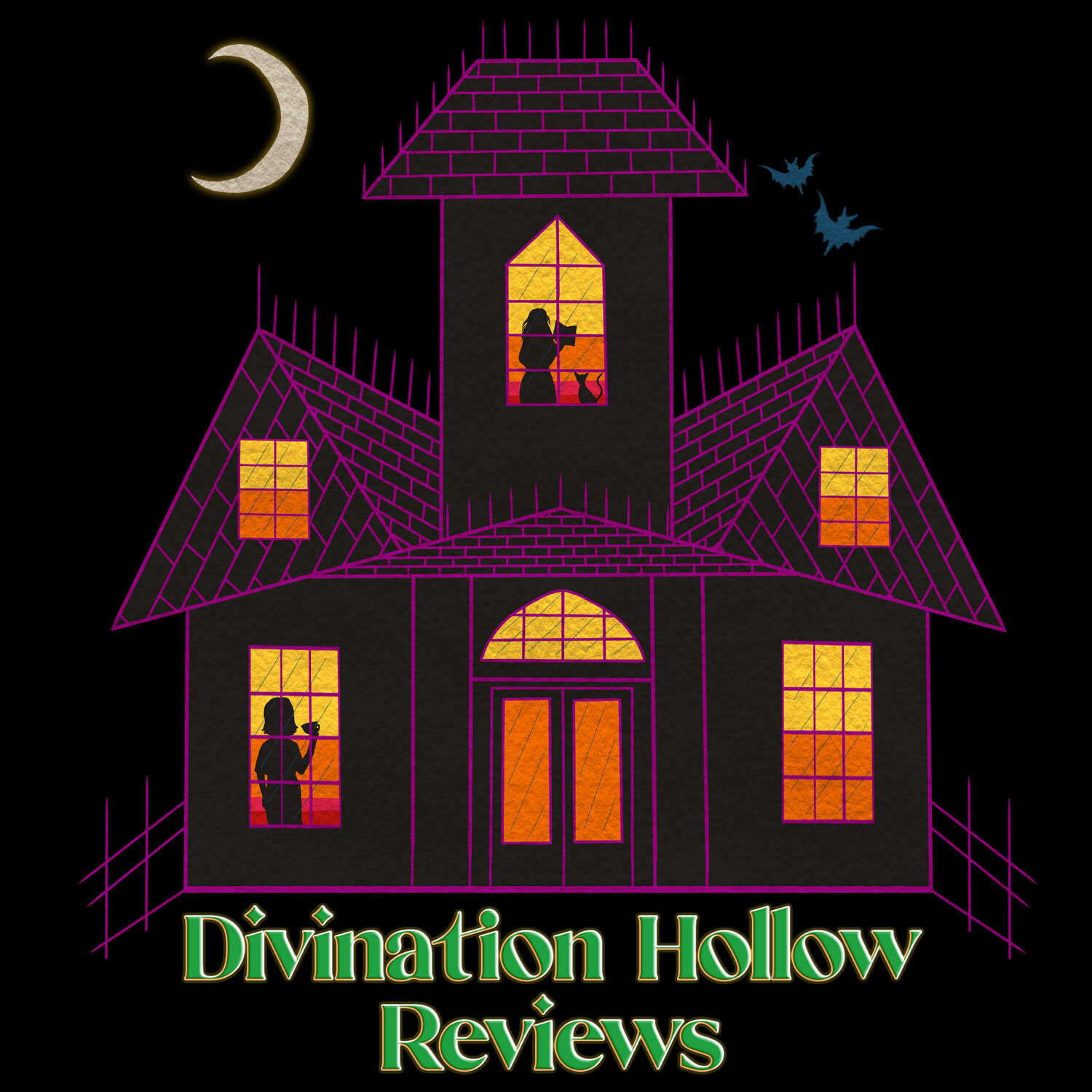Witchcraft and Satanism: A Horror Trope That Should Consider Divorce
Welcome to our 2nd Annual Birthday Bash as Divination Hollow Reviews!
We’ll be celebrating all month long with a series of posts by our team and esteemed colleagues and this year’s theme is “Going to the Movies!” Join us as we share themed content with special “tickets” for each category inspired by cinema.
Celebrate with us!
Witchcraft and Satanism: A Horror Trope That Should Consider Divorce
As a horror fan, there are subgenres I prefer and others I don’t. There are cliches I can’t get enough of and tropes I don’t like. I am never here to yuck someone’s yum or tell someone what they should write, film, read, or watch. However, I also have opinions about the media I consume, and I have one very strong one about a cliche I’d like to see change:
In this the year of our dark lord 2022, please stop immediately equating witches with Satanists.
Some of the earliest documented fears of witchcraft, at least in Puritanical and other Christian cultures, purported that witches were in league with the devil. Anything done in the name of witchcraft - and even similar but not the same belief practices, such as paganism or druidism - were said to be the work of Satan. Witches were accused of cavorting with Satan, of calling upon the devil’s power to cast spells, and other flagrant nonsense in order to scare people into submission to the church.
Lies about witchcraft, and what early leaders called witchcraft, are well-documented by historians with books that are much better to read than any blog post I could write. I’m here to talk about how in 2022, long after the Salem witch trials and not so long after a Christian mother went viral for thinking Hocus Pocus 2 was casting spells on impressionable children, horror fiction still relies on creating a scary witch story by equating their work with Satan. In my humble opinion, it’s time to move on.
There are witches that also practice Satanism, and Satanists that practice witchcraft. However, witchcraft and wicca are not synonymous with Satanism. They are separate belief systems. While witches and Satanists often practice these religions in direct defiance of the church and/or patriarchal power, they’re not the same thing and never have been. As stated above, the equivalence was usually established by people in power trying to equate the two to scare people away from non-Christian institutions.
As such, one of the issues I have with horror constantly pairing witchcraft with the devil is that it’s directly in line with a belief peddled to us that is, frankly, bullshit. Horror - especially of late - prides itself on being counterculture, an alternative to square and squeaky-clean storytelling; but it’s still relying on Christian fire and brimstone storytelling to create a good scare. The devil in these films almost always matches the image shared by the Christian church: cloven feet, horns, sometimes a goat’s head. He’s summoned from Hell, symbolized by upside-down crosses, and associated with 666 (which is blasphemous because it’s seen as a perversion of the holy trinity). Witches, in turn, show themselves by practicing alongside the devil. When they dance around a fire, it’s to summon a demon. They yell “Hail Satan” or refer to Satan as their master when casting spells.
Such depictions are as old as time. The silent film Häxan shows a witch’s sabbath that includes everything from getting groped by Old Scratch himself to roasting a baby over a spit. But almost a hundred years later, we still see it. The Chilling Adventures of Sabrina - both the comics and the Netflix adaptation - show Sabrina and her coven practicing Satanic rituals (the show was famously sued by The Church of Satan for using its statue of Baphomet surrounded by children without the church’s permission). Even in movies like Robert Eggers’ The Witch, which empathizes with Thomasin’s rejection of the church and Puritanical beliefs, validates the fear of her abusive parents by equating her turn to witchery with her pledging allegiance to the devil.
Chances are, though, that your average neighborhood witch is less dark lord and more your favorite art teacher in elementary school. Look up witches on social media and you’ll find crystals, tea, nature, and yes, spells - but they’re less about summoning demons and more about channeling your own power to make things happen for you, or at least, make you feel more confident in striving for what you want and following paths for what you need. Perhaps the constant tying of witchcraft to Satanism is another way to make sure witches are reporting to a man?
Regardless, I also understand that crystals and essential oils aren’t necessarily fodder for good horror (at least on the surface - surely there’s a story there). Horror is supposed to be scary, and Satan’s an easy scare! Yes, I know - and, I argue, too easy a scare. It’s well-trod material, and it’s time to divorce Satanism from horror fiction’s witches.
There are of course stories that are doing just that. One of my favorite witch tales is Boneset and Feathers by Gwendolyn Kiste. Witchcraft is used fantastically and the story is effectively chilling without once having Odette call upon Satan or validate her town’s suspicions that she’s in league with the devil. There is so much terrifying ground to cover in witch stories. Why limit ourselves to the old, tired trope of witches serving the devil?
We all have our favorite horror tropes. However, there’s always a chance to breathe new life into existing ones, or find new ones altogether. I have the used and reused horror elements I like, but at the end of the day, I want to see new and interesting takes; especially when the usual ones are rooted in outdated fears and beliefs that still affect people to this day. Include witches. Include the devil. Consider divorcing them. It’s time they saw other people.
By Sonora Taylor
Sonora Taylor is the award-winning author of several books and short story collections, including Little Paranoias: Stories, Seeing Things, and Without Condition. She is an active member of the Horror Writers Association and serves on the board of directors of Scares That Care. Her latest book, Diet Riot: A Fatterpunk Anthology (co-edited with Nico Bell), is now available. She lives in Arlington, Virginia, with her husband and a rescue dog. Visit her online at sonorawrites.com.




